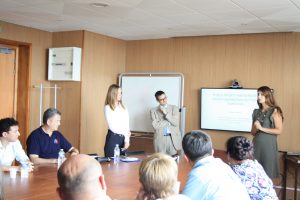Simultaneous or Consecutive Interpretation?
Interpreting is a crucial service provided during dialogues to facilitate understanding among parties speaking different languages, making it seem as if they were using the same language. This service is employed in various scenarios such as conferences, seminars, meetings, jury trials, and any discussion involving the exchange of ideas. In these situations, interpreters serve as intermediaries between native speakers of different languages, each representing distinct cultures.
Interpreting Skills and Training
Effectively interpreting a speech from one language to another demands specific skills and training. Due to the complexity of this activity, having a qualified interpreter is highly advisable.
Translator vs. Interpreter: Understanding the Difference
Confusion often arises between the characteristics of translation (written) and interpretation, compounded by professionals who engage in both practices. It is crucial to recognize that interpreting is distinct from translation, just as consecutive interpreting differs from simultaneous interpreting.
Compared to a translator, an interpreter conveys a speech in real-time without the luxury of managing the conclusion of the exchange. Unlike translators, interpreters cannot read and revisit the text beforehand, necessitating a high level of expertise. Transcribing an interpretation does not guarantee an excellent translation, and vice versa. These professions require different skill sets, with interpreters needing to excel in their real-time performance. Some professionals opt for specialization, and the page details various types of interpretation to aid in distinguishing between them.



 In consecutive interpretation, the interpreter does not speak simultaneously with the speaker but rather during the pauses.
In consecutive interpretation, the interpreter does not speak simultaneously with the speaker but rather during the pauses. Simultaneous interpretation involves the interpreter speaking concurrently with the speaker, introducing a slight delay. This form of interpretation is widely regarded as one of the most challenging due to the interpreter’s requirement to speak and listen simultaneously, often while utilizing technical equipment. The use of headphones or earphones enables the interpreter to hear the speech, which is then translated and conveyed orally through a microphone. Subsequently, the interpreter transmits the translated speech to individuals equipped with earpieces.
Simultaneous interpretation involves the interpreter speaking concurrently with the speaker, introducing a slight delay. This form of interpretation is widely regarded as one of the most challenging due to the interpreter’s requirement to speak and listen simultaneously, often while utilizing technical equipment. The use of headphones or earphones enables the interpreter to hear the speech, which is then translated and conveyed orally through a microphone. Subsequently, the interpreter transmits the translated speech to individuals equipped with earpieces.


